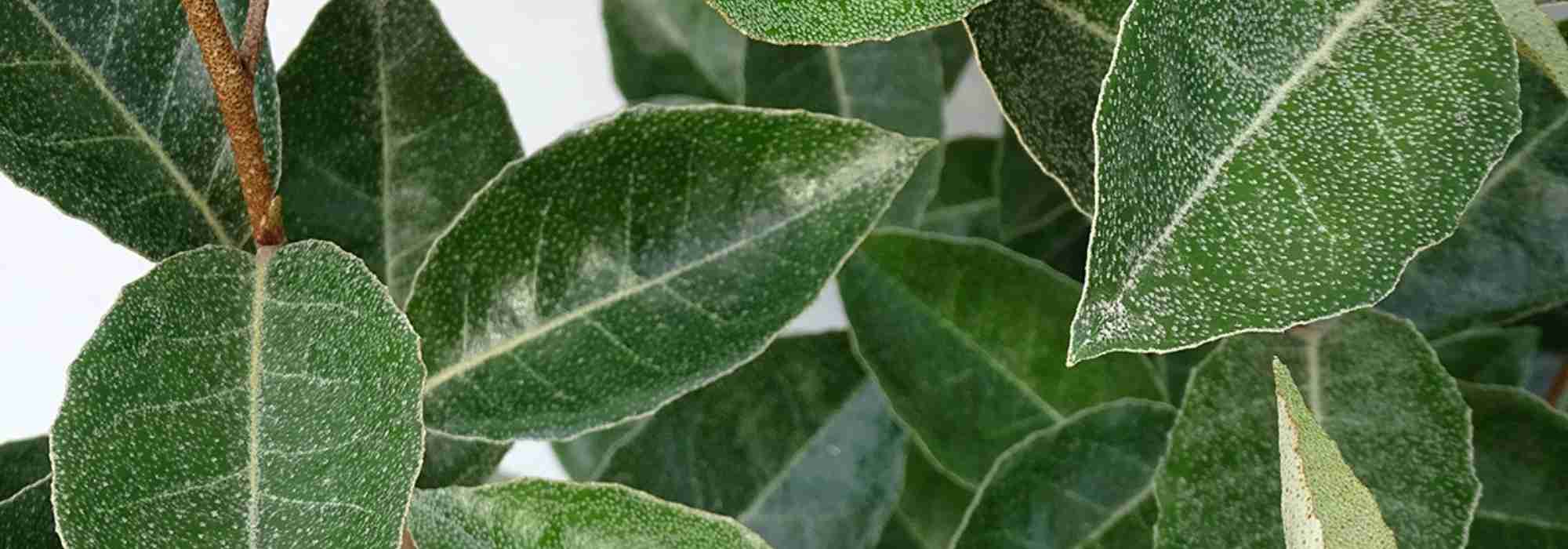
Elaeagnus: when and how to prune?
All our tips for successful pruning
Contents
Eleagnus, also called oleaster, is a bush highly prized for its bright green, silvery or variegated foliage, deciduous or evergreen depending on species, and its discreet but fragrant flowering. Its moderate size and bushy habit allow many uses; in a mixed hedge, clipped or left to flower, in a fruit hedge (since its berries are edible) or as a windbreak, it can also be trained as topiary. This bush grows quickly, and while that is an advantage for forming hedges rapidly, regular pruning is recommended so it retains a dense habit and, above all, desired height. It tolerates pruning very well, even severe pruning.
Discover when and how to prune Eleagnus, an elegant bush so easy to live with!
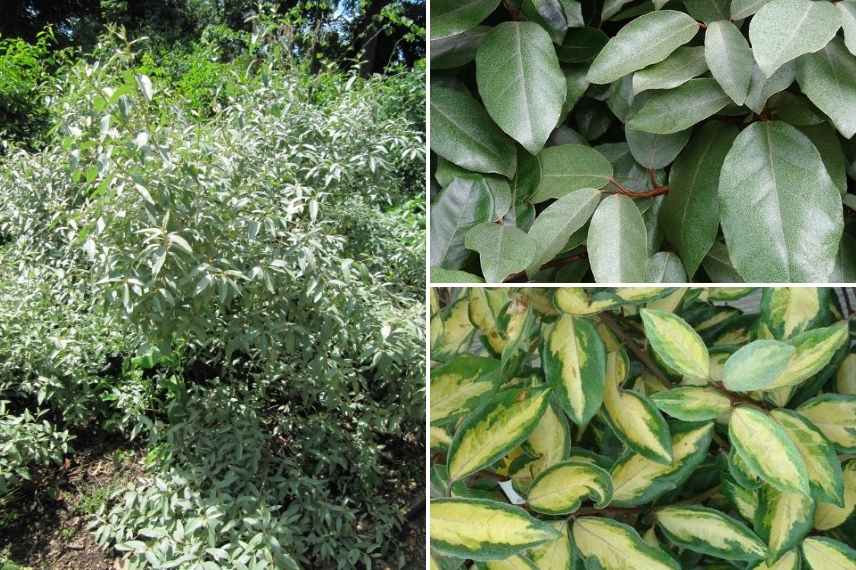
→ Learn more about Eleagnus with our complete fact sheet
Why pruning Elaeagnus?
With rapid growth, it forms a dense, ramified clump reaching 2 to 10 m in height at most and almost as much in spread.
Elaeagnus likes to be encouraged by pruning. In fact, it can be pruned at will and lends itself to all forms of pruning, even severe. Not absolutely necessary, but regular pruning is recommended for evergreen species. Although its somewhat free habit is appreciated, pruning stimulates emergence of new shoots and therefore leaves, helps maintain a well-filled, vigorous habit, reduces branches, and can even rejuvenate it. When not pruned, Elaeagnus ebbingei becomes sarmentous and tends to climb if it finds a support, so it is better to prune it unless you intend to train it.
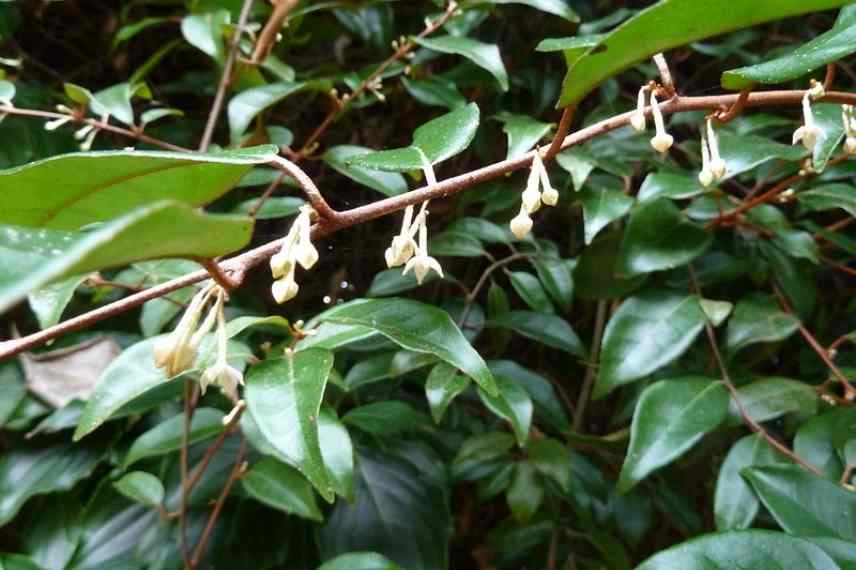
Branch of Elaeagnus glabra (Photo: W. Cutler)
When to prune?
Evergreen species can be pruned throughout the year to correct their habit. For deciduous species, pruning should be carried out at start of growth in February–March. Do not wait too long to carry out pruning because, over time, the wood becomes hard as it lignifies.
-
For hedges: prune preferably twice a year: once in late winter and again in mid-summer. Note: pruning the bush in late summer will compromise autumn flowering and fruit production.
-
Left to grow freely: it will need only a balancing pruning in spring, in February–March (while still dormant), to keep a regular shape and encourage branching.
- For a more severe pruning that will restore a bushy habit: intervene in late winter so as not to compromise flowering and fruiting.
Discover other Elaeagnus - Oleaster
View all →Available in 3 sizes
Available in 4 sizes
Available in 2 sizes
Available in 3 sizes
Available in 3 sizes
Available in 1 sizes
Available in 1 sizes
Available in 1 sizes
Available in 2 sizes
Available in 1 sizes
How to prune?
Generally, Eleagnus is a vigorous, fast-growing bush; you can prune it fairly short.
We recommend pruning using a pruning shear rather than a shear, as it allows more precise, more homogeneous and natural pruning. The pruning shear should be well sharpened and disinfected to avoid transmitting diseases to the bush and to facilitate healing.
Formative pruning
We recommend carrying out a light formative pruning when the bush is young during first years so it grows densely and harmoniously. At end of winter, to encourage branching, prune about one-third of last year’s shoots.
Maintenance pruning
Start by stepping back and observing overall shape of the bush. Ideally cut branches growing upwards or outwards. This encourages their growth towards the centre to fill gaps.
- Prune shoots that disrupt symmetry, taking care not to create gaps: select each branch to cut so as to rebalance the branches
- Cut damaged or dead shoots
- Remove excess or poorly placed shoots
- For variegated Elaeagnus, cut green shoots and green suckers, otherwise they will eventually dominate

Prune regularly to maintain bush’s dense habit: here on left an Eleagnus ebbingei compacta, and on right an Eleagnus ebbingei ‘Eleador’
Rejuvenation pruning
A hard cutback allows rejuvenation of an over-aged or neglected Eleagnus, renews its branches and restores vigour. This bush tolerates severe pruning well. In March–April, with a pruning saw, cut back branches to 60 cm from ground level. It will probably not flower in year of pruning.
Did you know?
It is also possible to prune Eleagnus into a topiary: further proof that it can withstand severe pruning!
Read also
How to choose your Elaeagnus?Find out more
- Also consult our complete guide:Elaeagnus: planting, pruning, to grow
- Discover our ideas for pairing Elaeagnus
- Subscribe!
- Contents
































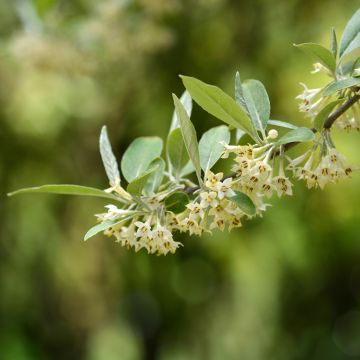
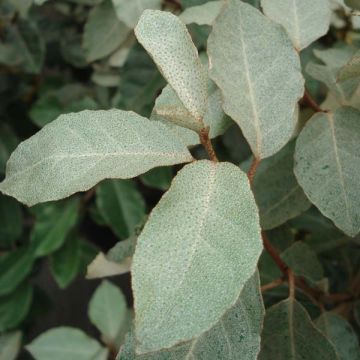
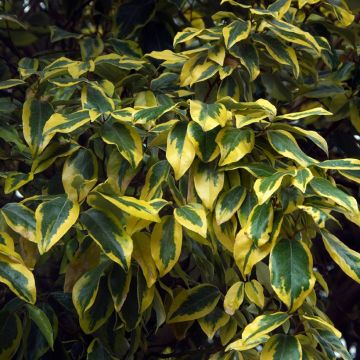
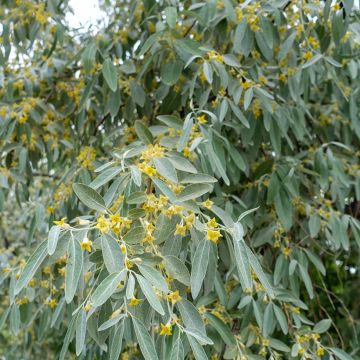
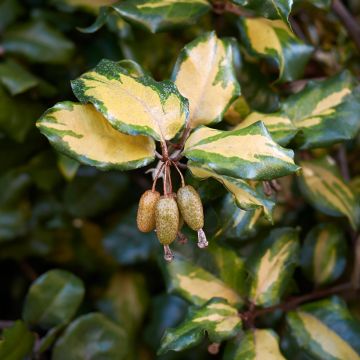


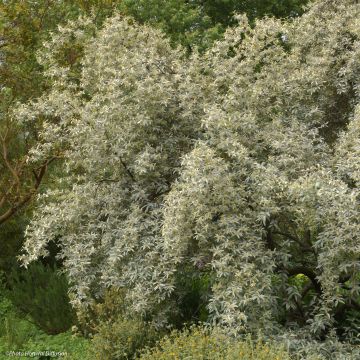

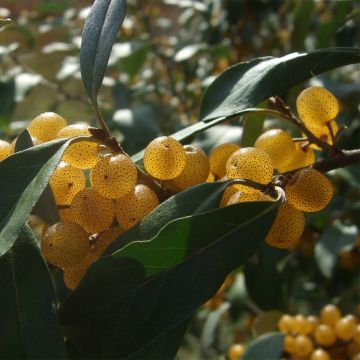
Comments